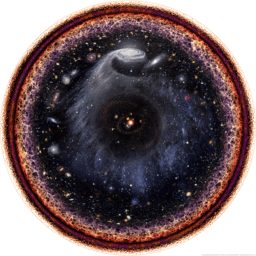
Portrait of Baruch de Spinoza (1632-1677), ca. 1665, by an unknown artist
In this article, Charles M. Saunders considers Looking for Spinoza: Joy, Sorrow, and the Feeling Brain by Antonio Damasio
(Houghton Mifflin Harcourt Publishing, N.Y., 2003)
In 2003, one of our most capable and respected neuroscientists went searching for Spinoza. What Antonio Damasio found is both enlightening and alarming. It is laudable that an empirical scientist had the interest, care, and capability to analyze the sequencing and behaviors associated with what Spinoza terms ‘the Emotions.’ This is clearly a positive development. When our neuroscientist friend recognized that something about emotional response is measurable, he made strides for the entire scientific community. But by focusing his analysis only on chapters 3 and 4 of “The Ethics”, Damasio sidetracks Spinoza’s metaphysics, chapters 1 and 2 while presenting Spinoza as some sort of intuitive materialist. The alarming part in all of this is that chapters 3 and 4 are linked inexorably to 1 and 2 wherein Spinoza insists that our thoughts are as real as our experience. As notable as Damasio’s respect for Spinoza’s psychology may be there is a tremendous distance from his awakening to the import and physical reality of the emotions to an adequate understanding of the full impact of Spinoza’s discovery, that the human mind has the ability to form replications of objects so accurate that these ideas are essentially the same thing as the objects they represent.
This is an astounding claim that Spinoza makes and to this day, it has been overlooked or dismissed in light of the advances in contemporary science and its ability to “reduce” everything in its purview through observation and measurement. But cause and effect are not observable within the same time and space.

Brain illustration from The Principles and Practice of Medicine…’ by W Osler, 1904, public domain via Wikimedia Commons
When the neuroscientist-researcher connects electrodes to a patient to monitor brainwaves there is no question that the observable patterns that emerge are exciting and are indicators of some brain activity related to behaviors that correspond to the patient’s emotional state and mood changes But to conclude from this that the patterns and their location in the brain somehow indicates the cause of the thinking process is a leap that indicates faulty reasoning and bad science. To draw a conclusion about the source of the thinking process from an electroencephalogram is akin to a person who while standing atop the tallest building in a large city before dawn observes the pattern of traffic lights below and concludes that the pattern of lights is the cause of the flow of traffic. No matter how many thousands of lights make up the discernable pattern of the flow of traffic, the actual cause of the traffic is not observable. The cause of the traffic resides elsewhere. It originates in the reasons that each individual driver leaves home and enters the flow: going to work, driving a friend to the hospital, making deliveries, police responding to emergencies and countless other actions are the actual cause of the traffic and they are entirely disconnected from one another. There is no common cause to be observed and reported on here.
This analogy demonstrates the confusion inherent in the empirical process. There is no argument about what the scientist sees during the study. But there is a strong argument against what he claims to have observed. If this mistaken insistence that causality must be observable resided solely in speculative neurobiology the harm might not be that negligible. Unfortunately for us, this curious misunderstanding of cause and effect permeates most of our scientific theory and practice, including applications in healthcare diagnosis and treatment.
Perhaps one of the most debilitating misapplications of the empirical process lies within the field of genetics and the supposed causal link observable in DNA. Crick and Watson never assigned any causal agency to their brilliant discovery. They clearly understood DNA for what it is; a marker not a cause. Assigning cause to DNA strands came later after arrogance and the same faulty reasoning process employed by Damasio came into play. Whether a person suffers from cancer or obesity or a predilection towards baldness, DNA is not the cause of the affliction it merely marks the presence of the condition. To carry the traffic lights/scientific research analogy a bit further, just as we can clearly understand that no matter how complicated or advanced the light pattern and system flow technology might be it cannot be said to be the cause of the traffic. That flow can only be understood by seeing the individual actions and behaviors that are the actual cause. So with DNA, it is a marker that notes the presence not the cause of disease.
The upshot of all this is that our current empirical/materialist science system that has brought about some of the most significant advances for humans in medicine and other sophisticated technologies contains a seriously flawed view of cause and effect. But by insisting on a research focus only on the world of external experience it ignores the rich world of experience’s counterpart and co-equivalent, the Human Mind. This now outmoded way of explaining our planet and our relationship to it must give way to a more sophisticated view. This view will credit the mind as the source and wellspring of any scientific achievement that we’ve ever accomplished and that it is the mind which provides us with the most magnificent tool at our disposal for unraveling Nature’s mysteries.
Charles M. Saunders
~ Ordinary Philosophy is a labor of love and ad-free, supported by patrons and readers like you. Any support you can offer will be deeply appreciated!
*All views and opinions expressed by guest writers are their own and do not necessarily express those of Ordinary Philosophy’s editors and publishers




